fortechiesanddigitalhumanists
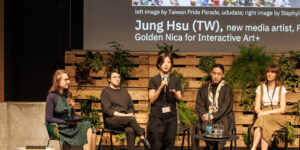
Morning Inspirations: Creative Resilience for a Planet B
Sigrid Bürstmayr (AT), Rashin Fahandej (US/IR), Adrian van Hooydonk (NL), Yuima Nakazato (JP), Jung Hsu (TW) & Natalia Rivera (CO), Marcus Neustetter (ZA), Tom Lamberty (DE)
In der Morning Inspirations Session diskutieren Mitglieder des Ars Electronica Futurelab, seine Partner*innen und die künstlerische Community gemeinsam mit dem Publikum über „Kreative Resilienz für einen Planet B“: Wie können Kreativität, Kunst und Technologie die Gesellschaft angesichts vieler Krisen unterstützen? Wie kann Resilienz von einer persönlichen Verantwortung in ein gesellschaftliches Phänomen verwandelt werden?
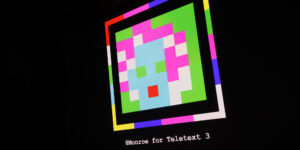
Teletext is Art
Bloom Jr. (DE), Buzzlightning (DE), Gleb Divov (LT/RU), Christoph Faulhaber (DE), Max Haarich (DE), Juha van Ingen (FI), KleinTonno (DE), Claudie Linke (DE), Nissla (AT), Numo (DE), Quasimondo (DE), Jarkko Räsänen (FI), Mamadou Sow (DE), sp4ce (DE) and tius (DE)
The teletext exhibition “Teletext is Art” will be shown in a presentation at Deep Space 8K. Five of the participating artists present their artworks, provide insights into the technical implementation of teletext artworks and the aspect of immortalization as NFTs in the blockchain.
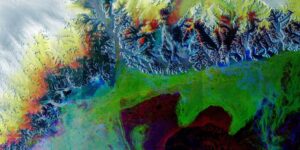
Fragility & Beauty – Earth from Space
Nils Sparwasser (DE), Robert Meisner (DE), Rupert Huber (AT)
Join us on a journey around the world with breathtaking satellite images of our planet. Robert Meisner (ESA) and Nils Sparwasser (DLR) show how beautiful, fragile and endangered our planet is and how we are changing the surface of the Earth at an unprecedented speed. Be fascinated by the possibilities of Earth observation satellites, which today permanently provide us with information about the state of our planet.

Taking the pulse of our planet from space
Simonetta Cheli (IT) , Robert Meisner (DE)
The view of the Earth from space is the only perspective that allows us to observe changes on our planet. To demonstrate the relevance and value of Earth observation in terms of environmental and socio-economic benefits, the journey takes us to current issues around climate change with a virtual presentation.
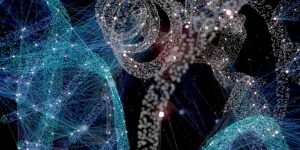
The Nature of Systems
Sebastian Pirch (AT), Norbert Unfug (AT), Christiane V. R. Hütter (AT), Jörg Menche (DE)
We live in the anthropocene, where human and natural ecosystems collide. In this interactive visualization, we explore the emergence and breakdown of complex systems from the cellular to the planetary scale. Life emerges from the interactions of biomolecules, cities from connecting people, the global society from sharing ideas. These systems can be beautiful, but also fragile.
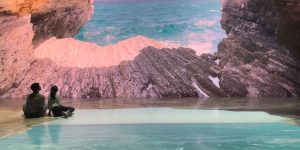
The Art of enjoying the Silence
Georgios Tsampounaris (GR)
A meditative immersive experience of sea-view, underwater, landscapes and wave soundscapes in Mediterranean. The more you see and hear repetitive patterns and sounds, the more you start observing micro-details.

FRUIT ART... REAL Vs.-VIRTUAL LIFE (FA-RVsVR)
Franz Fischnaller (IT)
Exploring How Nature Makes Fiction Come Alive – 8K 3D Stereo Gigapixel immersive fruit art-based experience, gravitating around the invisible world of fruits. Visitors are virtually transferred “inside”.
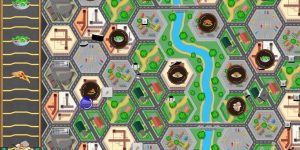
Deep Delivery
Jeremiah Diephuis (US), Andrea Haider-Pachtrog (AT), Rita Hainzl (AT), Paul Huemer (AT), Sebastian Mayer (AT)
In the co-located game Deep Delivery, designed specifically for Deep Space in the Ars Electronica Center, players assume the role of delivery services that take orders from the participating viewing audience, competing for the most accurate and fastest delivery performance.
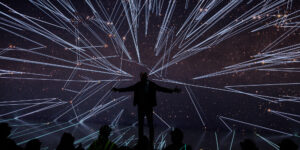
Superlative telescopes: In the desert and far behind the moon
Dr. Dietmar Hager — Stargazer Observatory (AT)
The well-known Hubble Space Telescope (HST) has reached its limits. Modern telescopes will have to work outside visible light to make new discoveries possible. The JWST (James Webb Space Telescope) is one of the successors. It will be supported by Earth-based telescopes, such as the Giant Magellan Telescope (GMT), which is currently being built in Chile. The talk reaches out from the HST to the JWST and the GMT and gives an idea of how new insights will revolutionize our understanding of space.

Searching for Planet B: How Astronomy Visualization and Remote Sensing Guide Us to Humanity’s Future
Dan Tell (US)
Thousands of years of increasingly precise measuring and modeling have revolutionized humanity’s understanding of the universe. We now know Earth is one of many planets, but it is uniquely habitable. The same research and techniques we use to understand these other worlds can help us understand what made Earth habitable in the first place and how we can restore and sustain this planet into the future.

